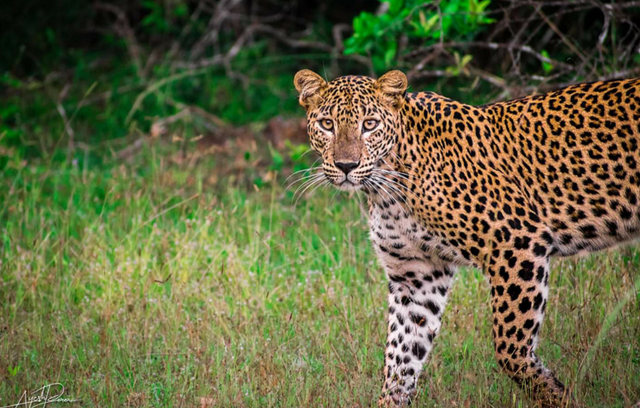Srilankan leopard
Wilpattu national park
2019 /02/16
Nikon d5500 + nikkor Af-p 70-300
#lepord #lepordsinsrilanka #wilpattu #nationalpark #srilanka #safari #adventur #wildphotography #nikon #nikond5500
The Sri Lankan leopard (Panthera pardus kotiya), also called Ceylon leopard, is a leopard subspecies native to Sri Lanka that was first described in 1956 by the Sri Lankan zoologist Deraniyagala.
According to a BBC article, the Sri Lankan leopard has evolved to become a rather large leopard subspecies with very large males reaching almost 220 lb (100 kg), due to the fact that it is an apex predator without competition by other large wild cat species in the country.
study in Yala National Park indicates that Sri Lankan leopards are not any more social than other leopard subspecies. They are solitary hunters, with the exception of females with young. Both sexes live in overlapping territories with the ranges of males overlapping the smaller ranges of several females, as well as overlapping the ranges of neighbouring males. They prefer hunting at night, but are also active during dawn and dusk, and daytime hours. They rarely haul their kills into trees, which is likely due to the lack of competition and the relative abundance of prey. Since the leopard is the apex predator in Sri Lanka, it does not need to protect its prey.[7] In 2001 to 2002, adult resident leopard density was estimated at 17.9 individuals per 100 km2(39 sq mi) in Block I of Yala National Park in Sri Lanka's southeastern coastal arid zone. This block encompasses 140 km2 (54 sq mi), contains coastal plains and permanent human-made and natural waterholes, which combined allow for a very high density of prey species.[2]
The Sri Lankan leopard hunts by silently stalking its prey, until it is within striking distance where it unleashes a burst of speed to quickly pursue and pounce on its victim. The prey is usually dispatched with a single bite to the throat. Like most cats, it is pragmatic in its choice of diet which can include small mammals, birds, reptiles as well as larger animals. Axis or spotted deer make up the majority of its diet in the dry zone. The animal also preys on sambar, barking deer, wild boar and monkeys[8]
There appears to be no birth season or peak, with births scattered across months.[7] A litter usually consists of 2 to 4 cubs.
The leopard is sympatric with the Sri Lankan sloth bear
******** From Wikipedia **********
More details - https://en.m.wikipedia.org/wiki/Sri_Lankan_leopard
